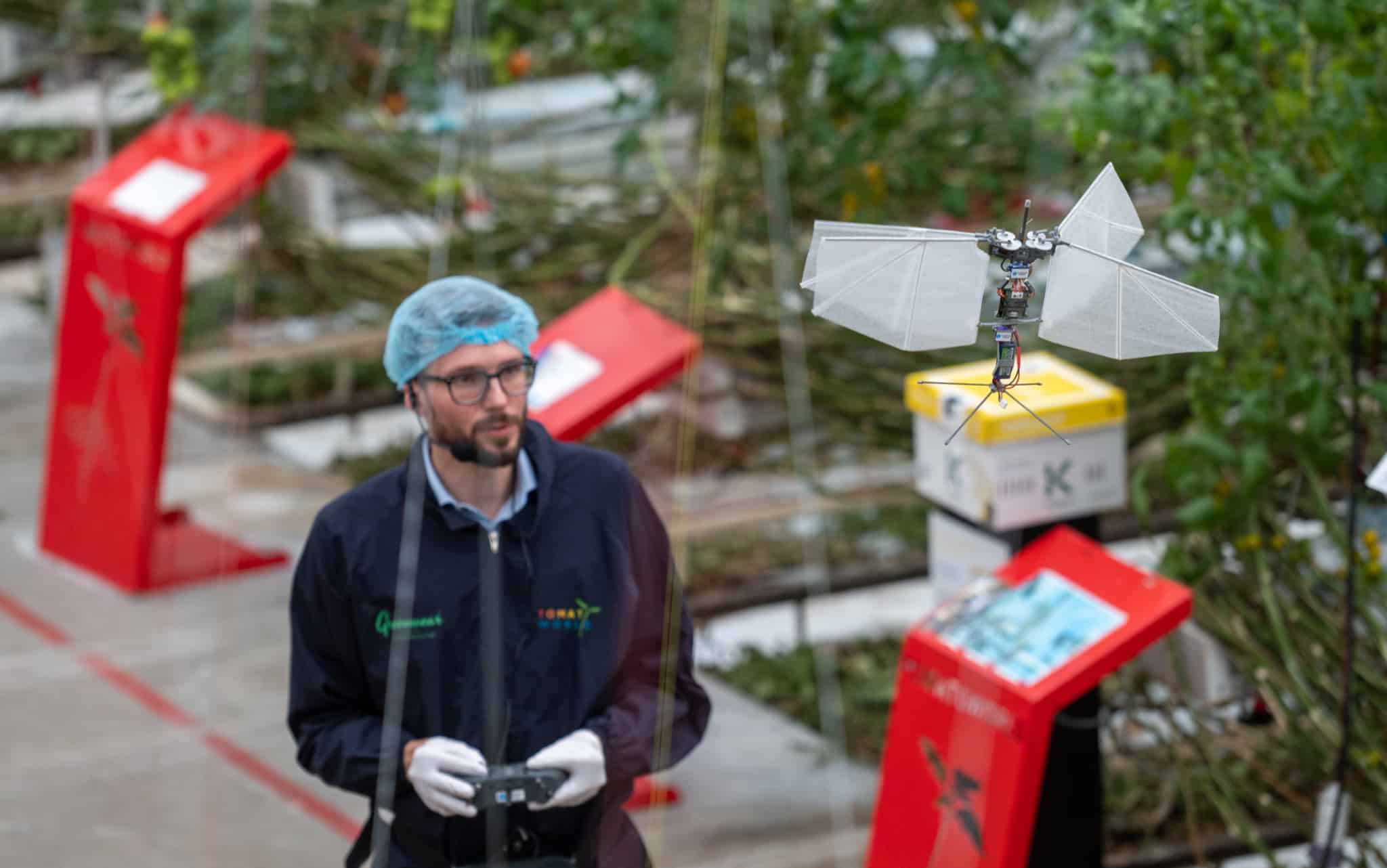
Wireless connections such as Wi-Fi and Bluetooth do not work well in a greenhouse because of the construction of glass and metal and because the density of the crop interrupts the signal. With 5G, wireless communication will be possible. This technology offers great opportunities for digital applications in greenhouse horticulture, as information can be exchanged at lightning speed. Think, for example, of cameras that monitor the maturity of the product, sensors that measure the need for nutrients per plant, better control of energy and climate control, and faster robotics.
The new 5G test facility at Tomatoworld, a test greenhouse for technology in Honselersdijk, says it is the first public place in a greenhouse worldwide where companies can test with 5G. The main advantage of 5G over 4G is the lightning-fast transmission of large amounts of data. The unique feature of this 5G installation is the higher frequency, which is 3.8 MHz. The 5G frequency currently offered by telecom operators in the Netherlands is 700 GHz. The higher frequency allows you to send much more data super fast. This is essential for accurately controlling robots, among other things.
Advice from experts
The test site at Tomatoworld is open to (tech) entrepreneurs who want to test their digital innovations in a practical environment. In doing so, they will receive professional advice from experts on the possibilities of 5G. The tech experts from TU Delft, Do IoT Fieldlab (Delft on Internet of Things), Robohouse, Tomatoworld, TNO, and MCS are dedicating the next two years to accelerate innovations for smart systems with sensors, robots, and drones, among others.
Innovations are crucial
The horticultural sector faces major challenges, such as an insufficient labor force, rising energy and raw materials prices, increasing sustainability requirements, and greater international competition. Experiments with 5G focus on sustainable and efficient food production with respect for people and the environment. Rapid technological innovations are crucial for the leading position of Dutch greenhouse horticulture. That is why local and regional parties are supporting the development of 5G applications in greenhouse horticulture.
In the run-up to making the 5G network operational, InnovationQuarter, together with Metropoolregio Rotterdam-Den Haag, the Municipality of Westland, the Innovation Fund Hagelunie, and the Province of South Holland, has played a role in bringing these parties together. From current projects Digitalzh & Robocrops, this group is now trying to reconnect SMEs with these projects. From early next year, at the start of the new crop, companies can start working with their sensors, robots, or other products.

